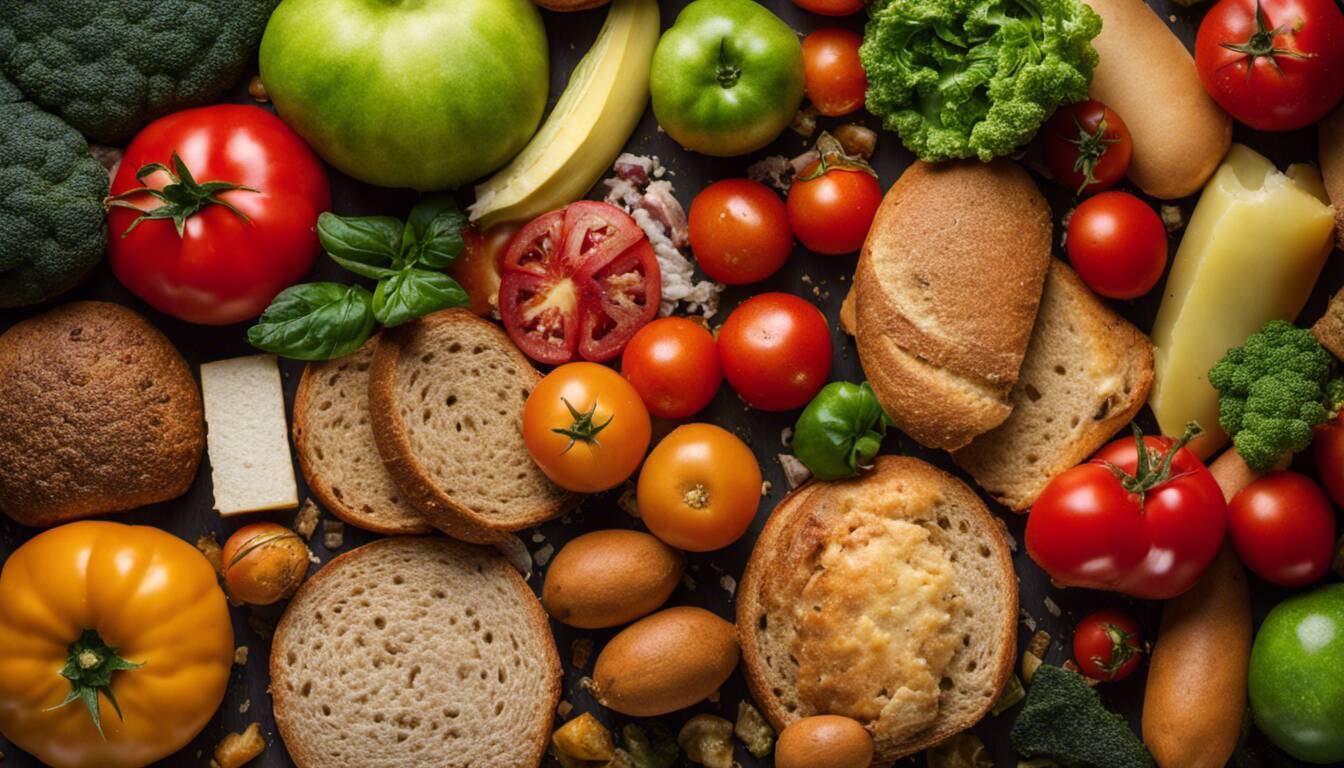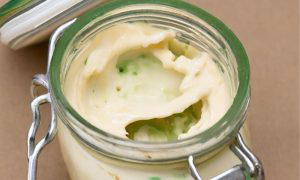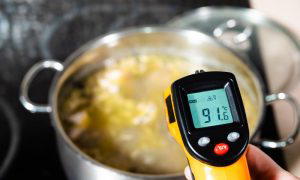Common signs of food spoilage can be confusing. This article helps you quickly identify spoiled food to avoid illness and waste. Learn essential tips to keep your meals fresh and safe.
Common signs of food spoilage include changes in appearance such as discoloration or mold growth, unusual texture or consistency, foul odor, or an off taste. Other factors that may affect food quality and safety include exposure to light, oxygen, heat, humidity, temperature abuse, and the presence of microorganisms such as bacteria, molds, and yeast. It is important to trust your senses and properly store or discard any food that appears spoiled to prevent the risk of illness.

Identifying Signs of Food Spoilage
Food spoilage is a common concern that can lead to health risks if ingested. To ensure you and your loved ones stay safe, it’s crucial to be able to identify the signs of food spoilage. By being aware of these indicators, you can promptly discard any questionable food items and prevent the consumption of potentially harmful substances.
One of the most noticeable signs of food spoilage is unpleasant odors emanating from the food. When a particular item starts emitting a foul or off-putting smell, it is often an indication that microbial activity has occurred. Certain bacteria produce volatile compounds as they break down the components of food, resulting in unpleasant odors. Trust your sense of smell; if something doesn’t seem right, it’s best to err on the side of caution and dispose of the item.
Visual changes in color are another clear indicator that food may have spoiled. Pay attention to any significant alterations in hue. For example, fresh meat with a bright red color might turn gray or brown when it spoils. Similarly, fruits and vegetables might develop mold or turn soft and mushy when they are no longer safe for consumption. Keep an eye out for such changes and discard any items showing distinct signs of color change.
Imagine opening your refrigerator door to find a container of milk with an unusual sour smell permeating from it—a clear sign that the milk has gone bad. The yellowish tinge it has taken on further confirms that it should not be consumed. By exercising caution and recognizing these visual cues, you can minimize the risk of falling ill due to spoiled food.
Now that we understand how to identify some common signs of food spoilage, let’s explore another important aspect: unpleasant odors.
Unpleasant Odors
Unpleasant odors coming from food can be quite off-putting and are often indicative of spoilage. As mentioned earlier, these odors are produced by bacteria as they break down food components. The presence of unwanted microorganisms can lead to the release of volatile compounds that cause a distinct foul smell.
When assessing the freshness of food, trust your sense of smell. For instance, raw fish or seafood with a strong “fishy” smell may not be suitable for consumption. Likewise, if you come across sour or rancid odors coming from dairy products like milk and cheese, it’s best to discard them. Even certain types of mold on bread or fruits can produce unpleasant smells and should be avoided.
Consider a scenario where you open a container of leftovers stored in your fridge and detect an overpowering odor resembling ammonia. This pungent smell indicates that the food has likely gone bad due to bacterial contamination and should not be consumed.
By being vigilant about unpleasant odors, you can safeguard your health and prevent potential foodborne illnesses. Trusting your sense of smell is crucial when it comes to determining the overall freshness and safety of various food items.
Changes in Color
One of the telltale signs of food spoilage is a noticeable change in color. Fresh foods usually have vibrant and appealing colors, while spoiled ones may appear dull, faded, or discolored. For example, if you notice that your lettuce has turned brown or your meat has a grayish hue instead of its usual pink or red color, it’s an indication that the food may be spoiling. Similarly, if fruits such as strawberries begin to develop dark spots or mold, it’s best to discard them as they have likely exceeded their freshness.
Picture this: You open your refrigerator excitedly to grab a container of leftover pasta salad that you made two days ago. Instead of the bright green basil leaves and cherry tomatoes you vividly remember from before, you’re greeted with a sad sight – browned herbs and slimy, discolored fruits. Clearly, these changes in color are signs that the food has started to spoil due to microbial activity or exposure to unfavorable conditions.
Noticeable changes in color can be a result of chemical reactions or microbial growth in food. These undesirable transformations can alter both the appearance and quality of food items.
Now that we understand how changes in color can indicate food spoilage, let’s delve into another significant sign: surface growth.
Surface Growth
Surface growth refers to the presence of visible mold or other unwanted organisms on the surface of food. While some molds may be harmless and even intentional (as seen in certain types of cheese), most molds are indicators of spoilage. Mold can range in appearance from fuzzy patches to powdery coatings, and can manifest in different colors such as green, white, black, or blue. Its presence usually suggests an unfavorable storage environment or prolonged exposure to moisture.
Imagine opening a package of bread only to discover unsightly patches of green mold on its surface. Or perhaps you notice fuzzy black spots on a piece of fruit that was left sitting on your kitchen counter for too long. This visible surface growth is a clear indication that the food has succumbed to microbial spoilage, as molds are types of fungi that thrive in warm, humid environments.
The presence of surface growth, such as molds, on food items can render them unsafe to consume. It’s important to note that molds can produce harmful mycotoxins, which can cause allergic reactions, respiratory issues, or even lead to more severe health problems.
Understanding the signs of surface growth and its implications is crucial in preventing foodborne illnesses caused by ingesting spoiled or contaminated food. In the next section, we will explore the various factors contributing to food spoilage and how we can mitigate them.
Factors Contributing to Food Spoilage

Food spoilage can occur due to various factors, compromising the quality and safety of our meals. It’s important to be aware of these contributing factors so that we can take proactive measures to prevent spoilage and protect ourselves from potential health risks.
One significant factor is microorganisms. Bacteria, molds, and yeast are common microorganisms that can thrive in food, causing microbial spoilage. These microorganisms break down the nutrients in the food, resulting in changes in taste, texture, appearance, and aroma. Pathogenic bacteria, in particular, pose a serious risk as they can lead to foodborne illnesses if consumed. To minimize the growth of harmful microorganisms, it’s crucial to adhere to proper storage practices and maintain hygienic conditions during food preparation.
The environment surrounding food plays a critical role in its shelf life as well. Factors such as light, oxygen exposure, heat, humidity, and temperature fluctuations can accelerate spoilage. For example, exposure to light can cause certain foods like dairy products and oils to become rancid more quickly. Oxygen also promotes the growth of spoilage microorganisms. Heat and high humidity create favorable conditions for mold growth on bread, fruits, and vegetables. Fluctuations in temperature can lead to bacterial growth on perishable items like meat and seafood.
Think of food spoilage like an uninvited guest at a party – unfavorable environmental conditions are like an open door and attractive environment that invites them in.
Another contributing factor is time. Over time, even properly stored food undergoes natural degradation processes. Freshness diminishes with each passing day as fruits become overripe and vegetables wilt. The longer food sits unused or stored improperly, the more likely it is to spoil.
Let’s say you have a loaf of bread that has been sitting on your kitchen counter for a week. As the days go by, you notice it becomes moldy and stale. This is a clear example of how time can contribute to food spoilage.
Understanding these factors provides us with valuable insights for preventing food spoilage and maintaining food safety. By taking proactive steps, we can help maximize the shelf life of our food.
Now that we have explored the contributing factors to food spoilage, let’s delve into effective prevention strategies and essential food safety measures.
Prevention Strategies and Food Safety Measures

To prevent food spoilage and reduce the risk of foodborne illnesses, following key prevention strategies and implementing proper food safety measures is crucial. Let’s take a closer look at some important practices to incorporate into our daily routines.
1. Cleanliness: Maintaining a clean environment is essential in preventing microbial contamination. Wash your hands thoroughly before handling any food, clean utensils and surfaces regularly, and practice good personal hygiene.
2. Storage Practices: Proper storage plays a significant role in preserving food quality. Store perishable items like meat, poultry, dairy products, and seafood in the refrigerator at or below 40°F (4°C). Use airtight containers or wraps to keep fruits and vegetables fresh. Be mindful of proper temperature zones within the refrigerator to prevent cross-contamination.
3. Separation: Avoid cross-contamination by keeping raw meats separate from ready-to-eat foods during storage, preparation, and cooking processes. Use different cutting boards for raw meats and produce to prevent potential bacterial transfer.
4. Cooking Temperatures: Cook foods to their recommended internal temperatures to ensure they are safe to consume. Use a food thermometer to verify that the minimum internal temperature has been reached, especially for meat, poultry, eggs, and leftovers.
5. Proper Cooling: Rapidly cool cooked foods before refrigerating them to minimize bacterial growth. Divide large quantities into small shallow containers or use an ice bath to speed up the cooling process.
6. Use-by Dates: Pay close attention to the use-by or expiration dates on food packaging and consume products before they expire for optimal quality and safety.
7. Regular Inspections: Regularly inspect your food items for any signs of spoilage, including changes in color, texture, odor, or taste. Trust your senses – if something seems off, discard it.
By implementing these prevention strategies and adhering to food safety measures, we can significantly reduce the likelihood of food spoilage and protect ourselves from potential health hazards.
- What are the common signs of food spoilage?
- Write 3 scientific statistics about “Common signs of food spoilage”:
- According to the U.S. Department of Agriculture, almost 30% of the world’s agricultural produce is lost each year due to spoilage.
- The World Health Organization states that nearly 1 in 10 people around the globe fall ill every year from eating spoiled or contaminated food, leading to approximately 420,000 deaths.
- The Food and Agriculture Organization reported that fruit and vegetables have the highest wastage rates of any food type, with an estimated 50% spoiling before they can be consumed.
Digital Resources for Food Safety and Spoilage Prevention
In today’s digital age, we are fortunate to have a plethora of resources at our fingertips to assist in various aspects of our lives. The field of food safety is no exception, with numerous digital tools and resources available to help us identify and prevent food spoilage effectively. These resources can serve as valuable allies in our quest to ensure the safety and freshness of the food we consume.
One such resource that deserves attention is the website of the Centers for Disease Control and Prevention (CDC). The CDC devotes a significant portion of their platform to food safety education and prevention of foodborne illnesses. Their online database contains a wealth of information on different types of food poisoning, symptoms, prevention measures, and safe handling practices. This digital resource is an excellent starting point for individuals looking to educate themselves on the fundamentals of food safety.
No discussion about digital resources for food safety would be complete without mentioning mobile applications. Several apps are available specifically designed to aid consumers in preventing food spoilage. For instance, there are apps that provide comprehensive databases containing information on proper storage temperatures for various foods. Users can simply enter the type of food they wish to store, and the app will generate storage recommendations, helping to avoid potential spoilage and wastage.
Consider the scenario where you want to store a piece of leftover chicken but aren’t sure if it’s still safe to eat after being refrigerated overnight. With an app like this, you could quickly check the recommended storage temperature for cooked chicken, ensuring its safe consumption and minimizing the risk of illness.
Alongside these mobile apps, innovative technologies such as smart refrigerators and smart kitchen systems have emerged in recent years. These connected devices come equipped with sensors that monitor temperatures inside refrigerators and pantries continuously. If there is any deviation from safe temperature ranges, users receive real-time alerts via smartphone applications. This enables quick action to rectify the situation, ensuring that food remains fresh and safe to eat.
Imagine having the peace of mind of knowing that you will be notified if your refrigerator temperature rises above the safe zone, preventing potential spoilage and minimizing wastage. These digital resources offer convenience and safety in equal measure.
Digital platforms also play a vital role in tracking and investigating foodborne outbreaks. Organizations like the CDC and the Food and Drug Administration (FDA) utilize online databases to collect information on reported cases of food poisoning. By analyzing this data, they can identify patterns, trace the source of contamination, and take necessary actions to prevent further outbreaks. These digital resources facilitate collaboration between consumers, health authorities, and food industry stakeholders to protect public health effectively.
As we have seen, digital resources for food safety and spoilage prevention are abundant and varied. From educational websites to mobile apps and smart devices, there are numerous tools available to empower individuals in their quest for safe food consumption. Incorporating these resources into our daily lives not only reduces the risks associated with food spoilage but also minimizes food waste, benefiting both our health and the environment.
- The digital age offers a wealth of resources for individuals to prevent food spoilage and ensure food safety, including educational websites, mobile apps, and smart devices. Utilizing these resources can help reduce the risks associated with foodborne illnesses, minimize food wastage, and protect public health effectively.
Are there any home remedies or preventative measures that can be taken to prolong the shelf life of certain foods?
Yes, there are several home remedies and preventative measures that can be taken to prolong the shelf life of certain foods. For example, storing fruits and vegetables properly can significantly extend their freshness. Additionally, using vinegar or lemon juice as natural preservatives in pickling or canning can help prevent spoilage. Research has shown that reducing exposure to air and light, keeping the temperature consistent, and controlling humidity levels also contribute to prolonging the shelf life of various food items. By implementing these strategies, you can reduce food waste and save money on groceries.
Can consuming spoiled food lead to serious health problems?
Yes, consuming spoiled food can lead to serious health problems. When food spoils, it can harbor harmful bacteria like Salmonella and E. coli that can cause foodborne illnesses such as nausea, vomiting, diarrhea, and even more severe complications in vulnerable individuals like children, pregnant women, and the elderly. According to the World Health Organization (WHO), around 600 million people worldwide fall ill each year due to eating contaminated food. Therefore, it is crucial to be aware of signs of spoilage and practice proper food safety measures to prevent these health risks.
Are there any common misconceptions about food spoilage and its signs that people should be aware of?
Yes, there are a few common misconceptions about food spoilage signs that people should be aware of. One misconception is that the presence of mold on hard foods like cheese or bread means the entire item is spoiled. In reality, you can cut off the affected part and still safely consume the rest. Another common misconception is that food must be discarded if it has passed its expiration date. However, most expiration dates indicate quality rather than safety, and many products are still perfectly safe to eat beyond that date. According to a study by the Natural Resources Defense Council, up to 90% of Americans may be prematurely throwing away edible food due to confusion over expiration dates.
How do different types of food spoil and what are the specific signs to look out for?
Different types of food spoil in various ways, but some common signs to look out for include changes in color, texture, smell, and taste. In fruits and vegetables, discoloration, mold growth, and a soft or slimy texture are key indicators of spoilage. For meats, a foul odor, slime coating, and changes in color are important signs. Dairy products often develop an off smell, curdled appearance, or mold growth when they spoil. To prevent food spoilage, it is important to store perishable items properly by refrigerating them at the right temperature and consuming them before their expiration dates. According to the FDA, 40% of all food in the United States goes uneaten each year, resulting in significant economic losses and environmental impacts.
What are some best practices for storing food to prevent spoilage?
Some best practices for storing food to prevent spoilage include keeping perishable items in the refrigerator at a temperature below 40°F (4°C), using airtight containers or wraps to protect food from moisture and air, and properly organizing the fridge by placing older products in front for easy visibility and consumption. According to a study by the Food and Drug Administration, refrigerating foods properly can extend their shelf life by up to 50%. Additionally, storing fruits and vegetables separately can minimize ethylene gas production, which leads to faster spoilage.